A foodie blog post is overdue and so I present to you, Oaxaca Eats Food Tours, the brainchild of Kay and Dean Michaels. Loving and appreciating Oaxaca and wanting to share it, they saw a niche and proceeded to fill it beginning in August 2018. The goals that guide their enterprise are:
- Share the gastronomic richness of Oaxaca with people from all over the world
- Hire local tour coordinators and support businesses passionate about their culture and cuisine
- Give back to the community through charitable donations
And so, a few weeks ago, I joined several others at the designated gathering spot (in our case, in front of the now departed OAXACA sign across from Santo Domingo) where Dean and Kay greeted us, introduced the tour guides and presented us with our “Tour Activity Sheet” that included an itinerary listing the restaurants we would be visiting and the dishes they would be offering — very handy for this blogger, when reconstructing the day.
Our first stop (if you don’t count a brief visit to a nearby cart for a few whet-your-whistle sips of tejate in keepsake small traditionally painted red jícara cups) was the rooftop terrace of Mezquite Gastronomía, a restaurant that has become one of my favorites of late.

Botana Oaxaqueña – guacamole, chapulines, quesillo, queso fresco, pico del gallo, chicken taquito, cecina, tesajo, chorizo, quesadilla, memela
Upon our arrival, a tall glass of fresh squeezed orange agua fresca, a platter filled with traditional Oaxacan appetizers, and a refreshing mezcal cocktail was set before each of us. Our waiter described each item and its preparation, while our tour coordinators translated and, during the meal, added a little history and a few anecdotes of their own, and answered any and all questions. They were a font of knowledge.

Perro Oaxaqueño – mezcal cocktail featuring grapefruit
Next on the tour’s itinerary was Los Danzantes, another restaurant I have been to many times. However, one of the fun parts of Oaxaca Eats, is tasting menu items you have never before ordered — because there are already too many dishes that sound delicious. In this case for me, tuna with a sesame tostadito and quesillo and queso wrapped in a hierba santa leaf.

Quesillo and queso in a hierba santa leaf
Besides a vaso veladora of one of the restaurant’s tasty mezcals, we were also served a Zegacola, a locally made artisanal alternative cola beverage. While I’m not a fan of soft drinks, this wasn’t nearly as cloying, actually had some flavor, and didn’t leave the impression it could remove the rust from a junkyard car.
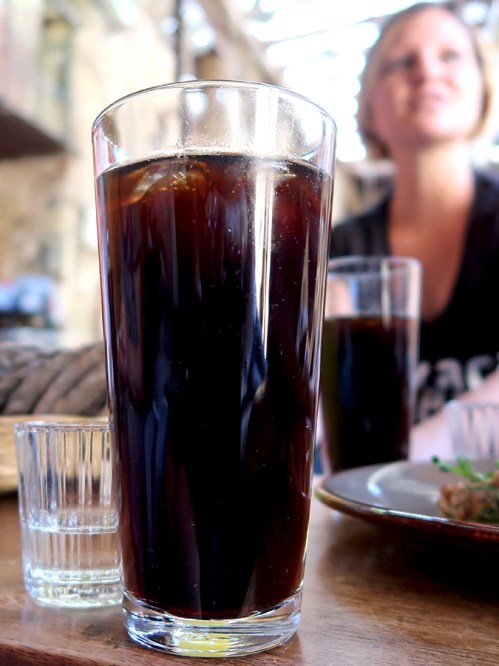
Tall glass of Zegacola next to a vaso veladora of mezcal
Our third stop was at a restaurant I have never before been to, though I pass by it frequently — the Centro Histórico branch of Tierra del Sol. It was here that the preparation became a participatory event. We were presented with tray containing a score of ingredients and instructed to choose those that were to be made into our salsa. I suspect there were no bad choices or combinations!

Table side grinding chiles in a molcajete for our salsa
In addition to the delicious, though a bit picante, salsa we had created, we were served a tetela filled with beans, chile, and an avocado leaf, along with three different moles, oh my! And there was an agua fresca of guanábana, a mezcal cocktail with pineapple and celery, AND two copitas (yes, two!) of mezcal — an espadín and a tobalá — from the palenque of maestra (yes, a woman!) Berta Vázquez in San Baltazar Chichicapam.

Mole Mixteco with chicken, Huachimole with pork, and Mole de Laurel with beef
Are you full? Sorry, there was more! A several block walk took us up to Don Juanito Taquería and Pozolería. By this time, we, too, were looking at each other in wide-eyed wonder and asking, could we possibly eat any more? But we could and we did. Besides, who could resist Doña Epifania’s charm and tales of the restaurant’s long history (since 1966).

Epifania Albino Robles, wife of owner Felix Leoza, explaining Don Juanito’s history and the preparation of each plate
Did I mention, it was a very hot day? I can’t begin to describe how refreshing the agua fresca of pineapple and hierba buena was! As if we hadn’t already eaten enough, in addition to tostaditos with guacamole and red and green salsas, we were served a beef tostada, beef taco al vapor, and their renown pozole.
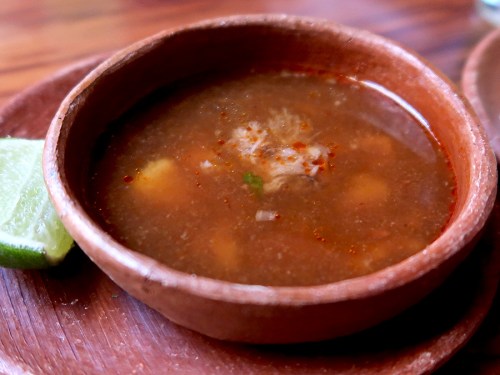
Pozole (beef and pork) de la Casa
Believe it or not, it still wasn’t time to part company. Our final destination was Cafébre, where a self-described coffee geek regaled us with her coffee knowledge and enthusiasm, all the while brewing coffee to exacting specifications — cup one using a Melitta filter pour-over technique and cup two using an AeroPress plunger-like device. I think we were all seriously surprised at how the taste of the same coffee beans could vary so much depending on the brewing technique.

Brewing coffee using Melitta filter technique
The sweetness of the day was sealed with a creamy maracuyá flavored cheese cake which, as unbelievable as it sounds, we all finished. By this time, Kay and Dean had rejoined us, we lingered, and then finally said our thank you’s and farewells and waddled back to our respective homes and hotels — sated and sleepy. Four hours of delicious dining is exhausting!!!
Read Full Post »







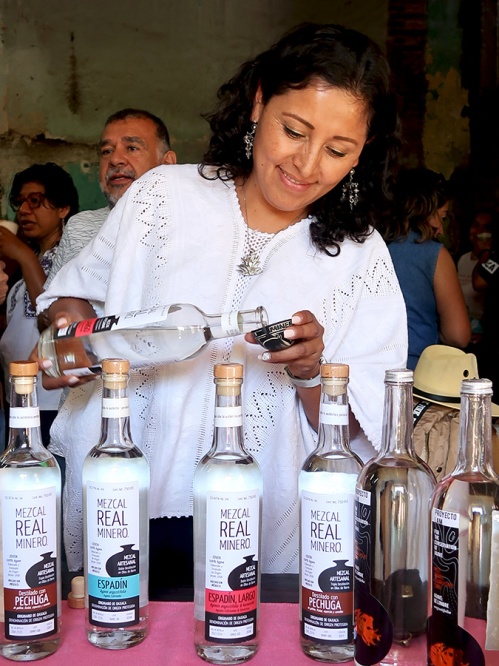
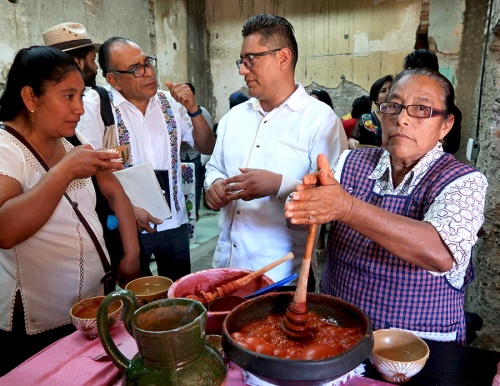


























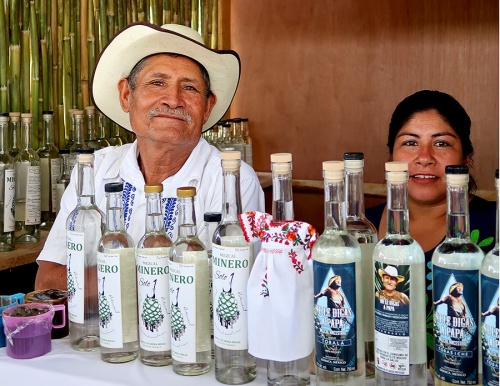


























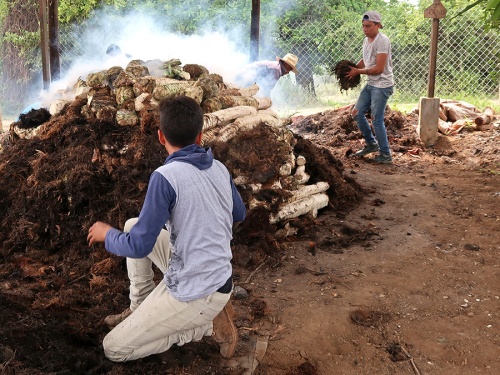



















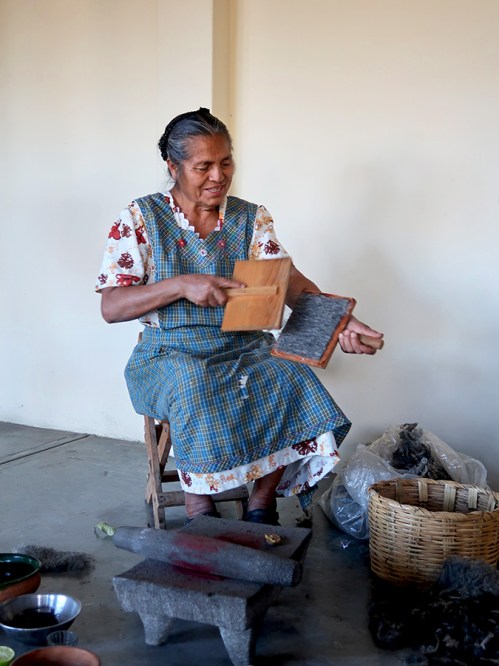
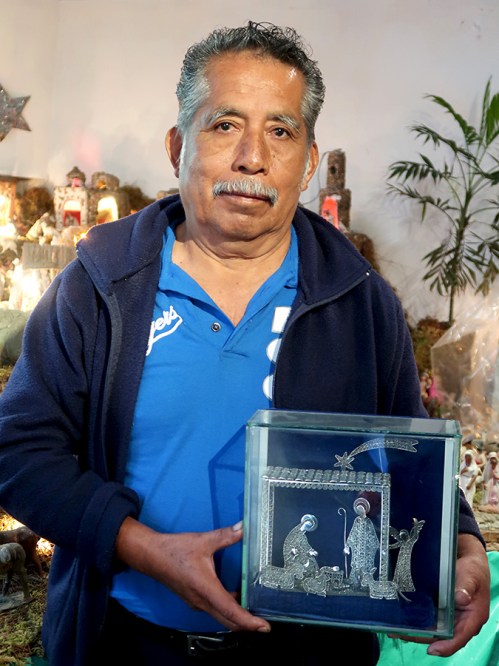



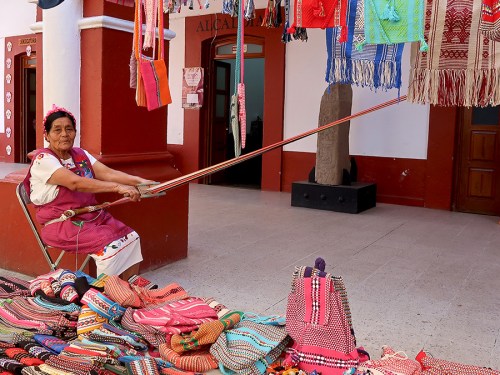
























 Mexican Peso Converter
Mexican Peso Converter